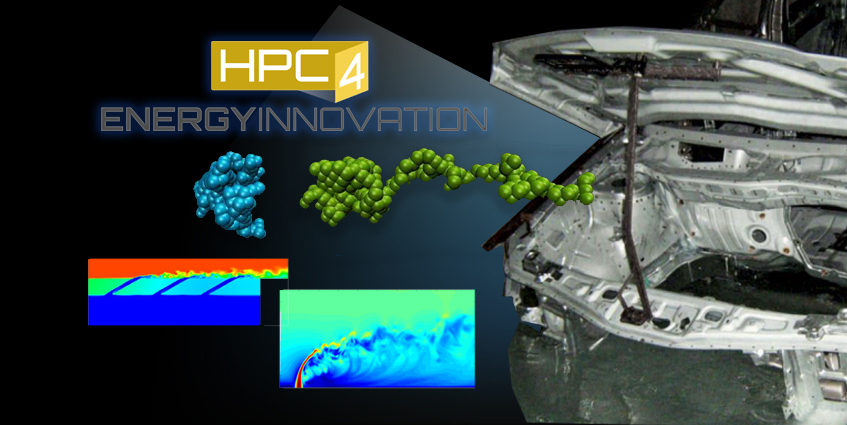LLNL to receive DOE funding for new HPC4EI projects
 (Download Image)
(Download Image)
The U.S. Department of Energy (DOE) today announced a $3.6 million investment in the High Performance Computing for Energy Innovation (HPC4EI) Program. Selected projects will receive access to DOE national laboratories’ supercomputers and expertise to help American companies address key challenges in manufacturing, material and mobility development. The awards include funding for two projects that will be co-led by Lawrence Livermore National Laboratory researchers.
The U.S. Department of Energy (DOE) today announced the 12 projects awarded funding under the latest solicitation for the High Performance Computing for Energy Innovation Program (HPC4EI), a public/private collaboration that seeks to leverage DOE’s high performance computing facilities at national labs for industry to improve energy efficiency and streamline manufacturing processes. The awards include funding for two projects that will be co-led by Lawrence Livermore National Laboratory (LLNL) researchers.
DOE’s HPC4EI Program is led by LLNL and includes the HPC4Manufacturing, HPC4Mobility and HPC4Materials Programs, supported with funding from DOE’s Advanced Manufacturing Office (AMO) and Vehicle Technologies Offices (VTO) within the Office of Energy Efficiency and Renewable Energy.
Among the awards:
- LLNL will be working with Ohio-based Saint Gobain Ceramics & Plastics to develop a way of increasing the fidelity of glass furnace simulation models by running multi-band radiation models in massively parallel computational fluid dynamics calculations. Investigators expect the project will lead to more rapid optimization of operating conditions for glass manufacturing processes, as well other energy-intensive industries in the United States. The AMO will fund $300,000 for the project through the HPC4Manufacturing Program.
- LLNL and PPG Industries Inc. will collaborate to use an experimentally tested dataset of roughly 100 molecules and molecular dynamics calculations to train an algorithm that predicts corrosion inhibition performance of organic molecules based on a large number of calculable criteria. The algorithm will be used to screen hundreds of thousands of commercially available candidate molecules for corrosion inhibition. It is expected the project, if successful, could cut months or years of experimental time needed to deliver the corrosion protection necessary to implement the most impactful lightweight materials. The VTO is providing $300,000 to the project.
“Lawrence Livermore National Laboratory continues to contribute its world class science to solve critical problems for energy materials and conservation,” said Robin Miles, director of the HPC4EI Program and a deputy division leader within LLNL’s Engineering Directorate.
Other national laboratories receiving funding for new projects under the HPC4EI Program include Los Alamos National Laboratory, the National Renewable Energy Laboratory, Sandia National Laboratories, Argonne National Laboratory, Oak Ridge National Laboratory and Lawrence Berkeley National Laboratory. Private/public partners include Dow, the Chicago Transit Authority and the city of San José.
Total funds invested by DOE is $3.6 million, with $2.1 million coming from AMO and $1.5 million from VTO. The industry partners are required to contribute at least 20 percent of project costs. For a full list of awardees, visit the web.
The fall HPC4EI solicitation was released on Nov. 4. For more information, visit the web.
Contact
 Jeremy Thomas
Jeremy Thomas
[email protected]
(925) 422-5539
Related Links
High Performance Computing for Energy Innovation ProgramTags
HPC, Simulation, and Data ScienceComputing
Engineering
HPC Innovation Center
Featured Articles







